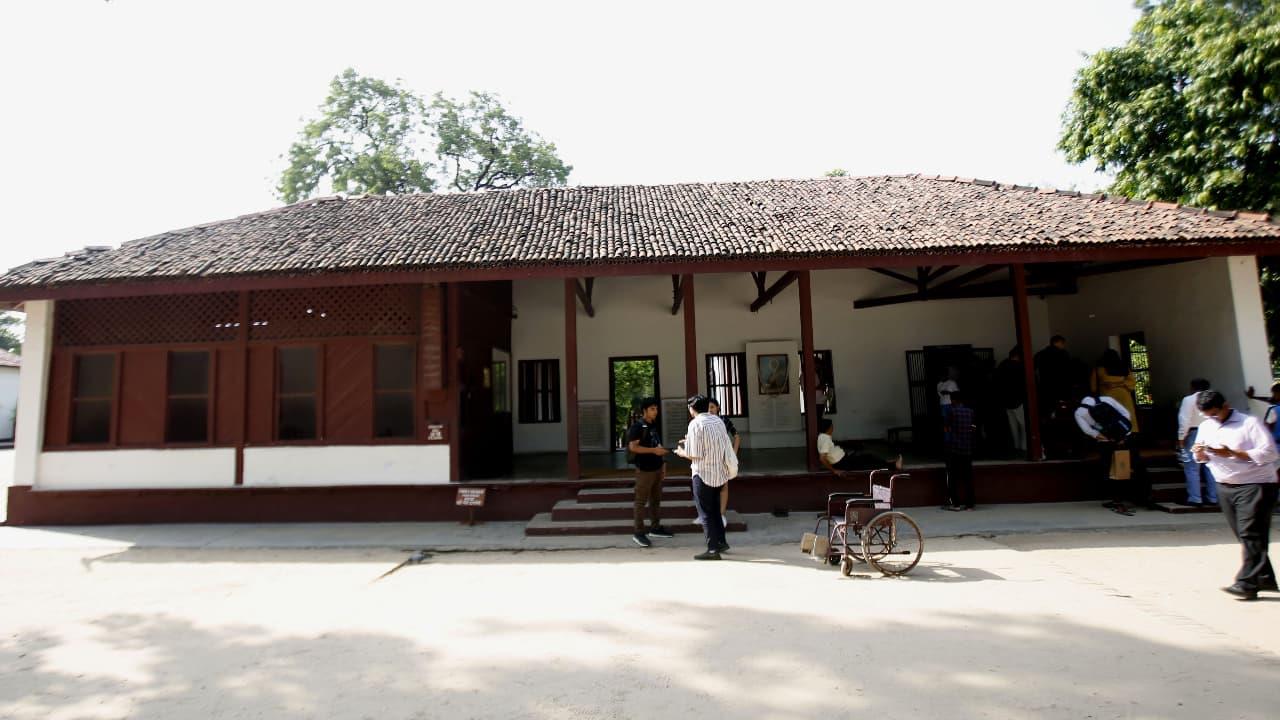
Gandhi Jayanti 2025: Top 8 Must-Visit Ashrams Across India And World
Celebrate Gandhi Jayanti 2025 by visiting 8 must-visit Gandhi Ashrams across India and the world. Experience historic sites, spiritual retreats, and iconic ashrams that honour Mahatma Gandhi's life and legacy.
Located on the serene banks of the Sabarmati River, Sabarmati Ashram was Gandhi's home and headquarters from 1917 to 1930, playing a pivotal role in India's freedom struggle. It was here that he launched the historic Dandi March in 1930, a turning point in the independence movement.
Today, the ashram stands as a living museum, showcasing Gandhi's simple lifestyle, his philosophy of non-violence, and rare archives of letters and photographs. A visit offers travellers not only a deep dive into history but also a tranquil space for reflection and inspiration.
Founded by Mahatma Gandhi in 1936, Sevagram Ashram became his residence for the last 12 years of his life and the hub of India's freedom movement during that period. Situated in a quiet village near Wardha, the ashram reflects Gandhi's vision of self-sufficiency, simplicity, and rural upliftment.
Visitors can explore his humble hut, the prayer ground, and preserved relics that tell stories of his daily life and political strategies. Today, Sevagram continues to function as a center for Gandhian thought, making it a meaningful stop for travelers seeking both history and inspiration.
Established in 1915, Kochrab Ashram was Gandhi's very first ashram in India, set up shortly after his return from South Africa. Located in the heart of Ahmedabad, it became the testing ground for his ideals of truth, non-violence, communal living, and self-reliance. From campaigns against untouchability to promoting khadi, many of Gandhi's earliest reform movements began here.
Today, though quieter than Sabarmati, the ashram still preserves its historic essence with exhibits, prayer halls, and a simple environment that allows visitors to reflect on Gandhi's formative years in India.
Mani Bhavan served as Mahatma Gandhi's headquarters in Mumbai from 1917 to 1934 and played a crucial role in India's freedom struggle. It was here that Gandhi launched significant movements such as Non-Cooperation, Satyagraha, Swadeshi, and Khadi promotion.
The historic house, once owned by Gandhi's friend Revashankar Jhaveri, is now a museum showcasing photographs, personal items, letters, and even a library with thousands of books on Gandhi and the freedom movement. A must-visit heritage site, Mani Bhavan captures the spirit of Gandhi's political and social leadership during India's fight for independence.
Gandhi Smriti, located on Tees January Road in New Delhi, is the site where Mahatma Gandhi spent his last 144 days and was assassinated on January 30, 1948. The ashram-turned-museum preserves the Martyr's Column, prayer ground, and Gandhi's personal belongings, providing a deeply moving insight into his final days.
Visitors can walk through the tranquil gardens, explore exhibitions on his life and philosophy, and reflect on his teachings of non-violence, truth, and peace. As both a memorial and educational centre, Gandhi Smriti offers a poignant experience for those looking to connect with India's most revered leader.
Tolstoy Farm, established by Mahatma Gandhi in 1910 near Johannesburg, was one of his first ashrams outside India and served as a hub for his early Satyagraha movement against racial discrimination. Named after the Russian writer Leo Tolstoy, the ashram emphasized self-sufficiency, communal living, and non-violent activism.
Residents engaged in farming, spinning, and educational activities, putting Gandhi's principles of simplicity and social reform into practice. Today, Tolstoy Farm is a historic site where visitors can explore the origins of Gandhi's philosophy, experience the simplicity of ashram life, and learn about his formative years in South Africa.
Founded by Mahatma Gandhi in 1904, the Phoenix Settlement in Durban was one of his earliest ashrams abroad and became a centre for communal living, self-reliance, and social reform. Gandhi and his followers cultivated the land, ran a print press, and lived by the principles of truth, non-violence, and simplicity.
The settlement played a crucial role in shaping his ideas of Satyagraha and peaceful protest against racial discrimination. Today, Phoenix Settlement stands as a historic landmark, offering visitors insight into Gandhi's early activism, daily ashram life, and his enduring philosophy that inspired movements worldwide.
Noakhali Ashram was established by Mahatma Gandhi in 1946 during his mission to restore peace and communal harmony in the aftermath of violent riots in the region. Gandhi lived among the locals, promoting non-violence, unity, and social reform, and personally worked to rebuild trust between communities. The ashram served as a centre for humanitarian work, education, and rural development, reflecting Gandhi's commitment to grassroots change.
Today, it remains a historic site for travelers interested in Gandhi's philosophy of peaceful activism and social justice, offering a glimpse into one of his most challenging and compassionate missions.
Legal Disclaimer:
MENAFN provides the
information “as is” without warranty of any kind. We do not accept
any responsibility or liability for the accuracy, content, images,
videos, licenses, completeness, legality, or reliability of the information
contained in this article. If you have any complaints or copyright
issues related to this article, kindly contact the provider above.


















Comments
No comment